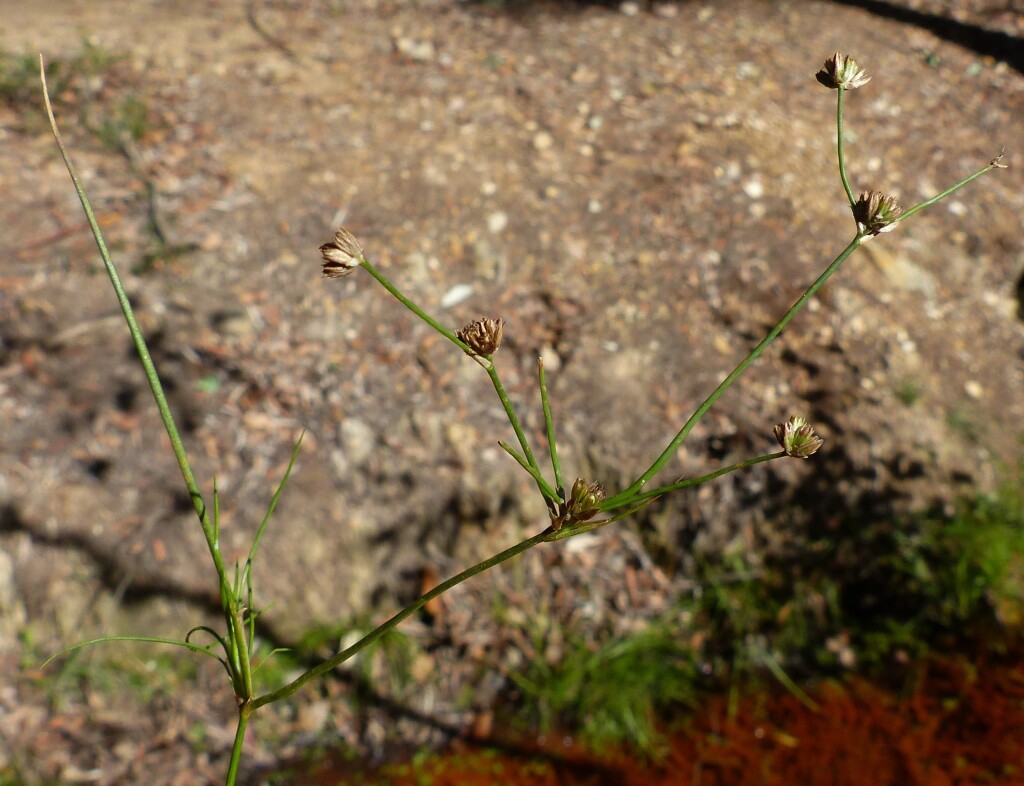Juncus bulbosus
L. Bulbous RushTufted, sometimes shortly rhizomatous perennial, usually reddish tinged. Culms erect or decumbent, to 30 cm high, usually bulbous at base; proliferating shoots sometimes arising from nodes and/or inflorescence. Leaves mostly basal, 1–3 cauline leaves usually present; blade of basal leaves usually equal to or shorter than culms, 0.3–0.6 mm diam., with 2 or more obscure, transversely septate internal tubes; culm leaves unitubular, septate, ± compressed, to c. 1.5 mm wide; apex acute to obtuse; auricles obtuse to acute, to c. 2 mm long. Inflorescence of 3–22 clusters, each cluster composed of 2–10 (rarely to 15) flowers, c. 4–8 mm wide in fruit, flowers occasionally replaced by proliferating shoots; primary bract shorter than inflorescence; prophylls absent. Tepals curved, midrib ± reddish tinged when young, margins pale, membranous; outer tepals (2.8–)3–3.6(–4) mm long, acute; inner subequal to outer, acute or obtuse; stamens 3–6, anthers 0.3–1 mm long. Capsules light brown, ± darker in upper half, trigonous-ovoid, (2.4–)3–4 mm long, subequal to tepals, obtuse (rarely subacute) and shortly mucronate; seeds 0.4–0.6 mm long, slightly asymmetrical, finely reticulate-patterned discernible at moderately high magnification, minutely apiculate at each end. Flowers mostly Oct.–Dec., seeds shed mostly Dec.–Mar.
Wim, GleP, Brid, VVP, VRiv, GipP, OtP, WaP, Gold, CVU, GGr, DunT, NIS, EGL, EGU, HSF, HNF, OtR, Strz, VAlp. Also naturalised in SA, NSW, Tas. Native to Europe and northern Africa. A fairly common weed of creeks, roadside drains, moist pastures and other soakage areas over a range of altitudes.
Old plants with withered basal leaves and long proliferating decumbent culms may resemble Juncus articulatus, but can readily be distinguished by the longer tepals (at least in Victorian material), and by the usually paler, less pointed capsules that at most only slightly exceed the tepals.
Albrecht, D.E. (1994). Juncus. In: Walsh, N.G.; Entwisle, T.J., Flora of Victoria Vol. 2, Ferns and Allied Plants, Conifers and Monocotyledons, pp. 197–233. Inkata Press, Melbourne.
 Spinning
Spinning


